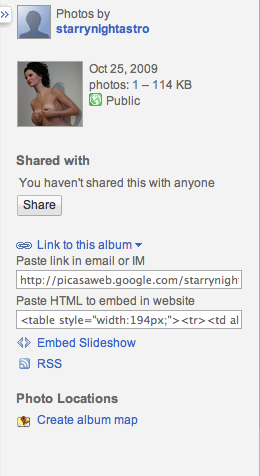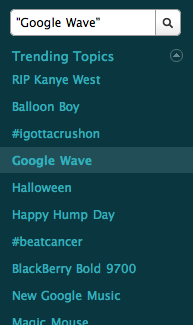 Many bloggers keep multiple blogs and often would like to post the same content on each. But who wants to keep posting the same entry over and over again?
Many bloggers keep multiple blogs and often would like to post the same content on each. But who wants to keep posting the same entry over and over again?
The options for cross-platform blogging are nearly non-existent, but one option Blog It, from Six Apart, allows you to post the same post to any WordPress powered blog, Blogger, Vox, Type Pad and Live Journal, plus it will do updates to your Twitter and Facebook page. It is available as a free app in Facebook. For the most part it is a beautiful thing. It has one flaw, and for serious bloggers it is a fatal one. It does not support adding images.
For a while, this has keep this blogger from using this very useful tool, but being at the bottom of the Google search pile because of the newness of this network has forced me to look at this again. Then an idea hit me, Picassa Web Albums.
Picassa Web Albums is Google’s free photo sharing application. Uploading images is as easy as uploading an image in WordPress. With Picassa, you can add an image to any web platform you can edit by copy and pasting the html coded provided for each image.
To access the HTML code click on “Link to this album” then copy and paste the code under “Paste HTML to embed in website”. Once you copy the code, you paste it right in to Blog It and it is there, once you paste it and post your entry, the image is there for world to see on all your blogs.
You can fiddle with the code to make it align right, center, or left, but the different platforms do handle the coding differently. Live Journal in particular is a bit fussy, the coding translating to right, center, or left within the picture frame itself. You can’t win them all, but at least with Picassa and Blog It, the bulk of the battle is won.



 Like most of you, I’ve been ignoring the Trending Topics on the sidebar of my Twitter page. In a real Homer Simpson moment, I hit my head and moaned “doh!” when I realized the opportunities missed by not utilizing this free and totally useful tool.
Like most of you, I’ve been ignoring the Trending Topics on the sidebar of my Twitter page. In a real Homer Simpson moment, I hit my head and moaned “doh!” when I realized the opportunities missed by not utilizing this free and totally useful tool. It’s three AM. Do you know where your daily post is today?
It’s three AM. Do you know where your daily post is today?